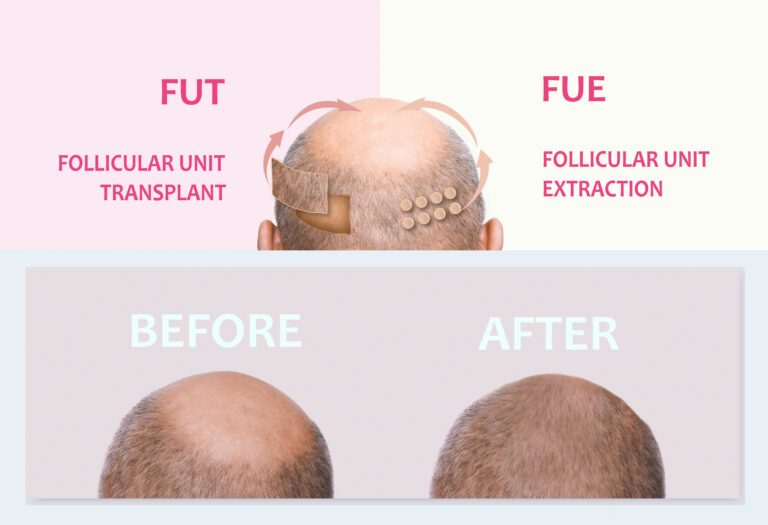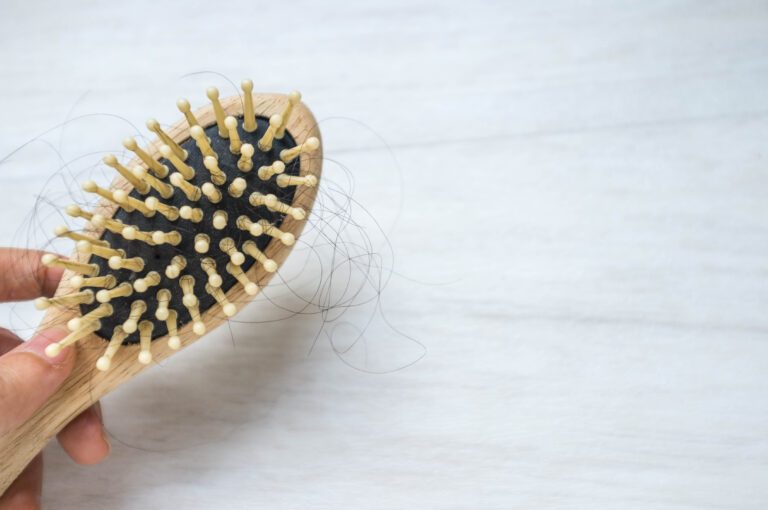Do Hair Transplants Work & Are They Really Worth the Money?
Clinique founder, Dr. Norman Orentreich, performed the first hair transplant surgery to treat male pattern baldness in 1952. Since then, hair transplantation has come a long way in transforming people with balding and thinning hair.
In fact, celebrities like Elton John, James Nesbitt, and Wayne Rooney opened up about how the procedure restored their confidence, along with their hair.
That said, hair transplants are surgical procedures; they carry a host of risks and a hefty price tag. So, is a hair transplant worth it? Let’s find out!
Do Hair Transplants Work?
Hair transplant surgery involves harvesting healthy hair follicles from one part of the scalp and grafting these into areas of hair loss. It’s the most effective hair loss solution, with a success rate of over 95%.
Nowadays, surgeons apply modern techniques to reduce complications while boosting success rates. The latest innovation is Follicular Unit Extraction (FUE), which makes up 66% of all hair transplants performed worldwide.
Here’s a quick summary of why most patients prefer FUE over traditional hair transplant surgeries:
- It doesn’t require a scalpel or stitches, so it’s safe and less invasive.
- Individual hair grafts leave tiny punctures that result in minimal scarring and shorter recovery time.
- Patients have less bleeding and postoperative pain.
- It promotes natural-looking results because surgeons can place the grafts in different directions.
However, hair transplants won’t give you a full head of hair if you begin with not much hair. Aside from that, patients with thick and light-colored hair have more satisfactory results than those with thin and dark hair.
Surprisingly, gray-haired people have much better success as well. On that note, it’s crucial to have realistic expectations about your surgical outcomes. Here’s a possibility: You’ll need complementary treatment or several procedures to achieve your hair goals.
How Soon Will You See Growth After a Hair Transplant?
About 2–6 weeks after the procedure, hair from the newly transplanted grafts will fall out. While it sure is scary, there’s no need to freak out—it’s a natural part of hair transplant recovery.
On average, you’ll notice visible growth after 3–4 months. Sometimes, it can take up to nine months for new hairs to take root. The regrowth timeline varies from person to person, but most patients enjoy their final postoperative result after one year.
Your new hair follicles will continue to grow hair over the years and fill out your bald spots. The grafts are permanent, so you can expect the hair transplant to last a long time.
Are You a Good Candidate for a Hair Transplant?
A thorough examination of a patient’s medical history and scalp health help surgeons determine candidacy.
Anyone suffering from androgenetic alopecia—male pattern hair loss or female hair loss—is a good candidate for a hair transplant. Aside from that, here are the key indications that increase the incidence of good hair transplants.
- Reasonable expectations
- Good health
- Healthy scalp
- Thick donor hairs
That said, hair transplants don’t work for everyone. These conditions may hurt your chances of getting the procedure.
- Widespread thinning of hair
- Insufficient hair and unstable hair loss
- Young age
- Unrealistic expectations
- Active alopecia areata
- Cicatricial alopecia
Is a Hair Transplant Worth It?
Depending on the number of hair grafts required, a hair transplant surgery can set you back at least $7,000. It’s pricey, but if you look at the benefits, you can say that hair transplants are the real deal!
In fact, according to an FUE hair transplant review, 94% of patients report that getting the procedure is worth it.
Natural-looking Hair
During the 90s, hair transplant surgeries involved transplanting large tufts of hair at straight angles and with gaps between them. This method often resulted in uneven and fake-looking hair.
Modern techniques have greatly improved results from a better understanding of angles and hair density.
Today, you can achieve fuller, natural-looking hair thanks to the FUE procedure. The size of these micro-grafts makes extraction and implantation highly accurate. Some hair restoration practices even use machine learning for precision.
With FUE, surgeons have more control of the donor region, avoiding over-harvesting the area. After extracting individual hair follicles, they implant them on the recipient site in a uniform and spread-out pattern.
It’s a long and meticulous process—imagine transplanting hundreds or thousands of hair grafts—but the outcome is always astonishing!
Improved Self-esteem
While not life-threatening, androgenetic alopecia often affects a patient’s self-esteem and quality of life.
In a 2019 study using the FACE-Q Satisfaction scales, results showed patients felt six younger after getting a hair transplant surgery.
The procedure not only improved the patient’s satisfaction with their physical appearance but also enhanced their social and mental well-being.
Permanent Solution
Hair transplant surgery uses natural hair from parts of your scalp not affected by baldness. Healthy hair follicles are resistant to dihydrotestosterone (DHT), which is the hormone responsible for thinning hair.
Because of this, the technique offers a permanent solution to permanent hair loss. However, patients with extensive baldness may need several surgeries to achieve their desired hair aesthetic.
FUE Hair Transplant Review
Many patients share their successful hair transplant experience in online testimonials. Some even have pictures and videos to prove it.
An anonymous patient with early-stage male pattern baldness had a frontal FUE. The key to the success of his procedure was the design of his hairline. He wanted brushed-up hair, so his surgeon implanted the hair grafts along the direction of his desired hairstyle.
Seven months after receiving around 700 grafts, the patient showed considerable volume and density at the front of his head. Best of all, he could wear his hair the way he liked it.
Another patient was a professional hairstylist who got an FUE to restore his balding front hair. He couldn’t be happier with his new look 18 months later.
Because his condition was hereditary, he continued his treatment with Rogaine, Propecia, and Low-level Laser Cap to slow down any impending hair loss.
Successful Celebrity Hair Transplants
Here are some celebrity clients who had hair transplant surgeries and loved the result:
Elton John
The British singer-songwriter suffered from Norwood Scale 4 baldness, which caused him severe insecurities as a performer. In his autobiography, Elton John spoke of getting two painful, unsuccessful FUT procedures in the late 70s.
In 2013, he had a final FUE graft to fix his botched hair transplant surgery. He continued using Rogaine and Propecia and has enjoyed a full head of hair since then.
James Nesbitt
By age 30, the Hobbit actor had a thinning crown and receding hairline, which he felt could affect his career.
Since his multiple hair transplant surgeries, James Nesbitt has been enjoying a youthful appearance with his thicker, fuller hair. He said in an interview that getting the procedure helped him land a wide range of roles.
Wayne Rooney
In a Twitter post, the former football player confirmed he had a hair transplant and was delighted with the result. Soon after, he released photos of his newly transplanted hair on social media.
Wayne Rooney started losing his hair in his teens and had a significant receding of hairline by the time he was only 25. Fans and teammates constantly joked about his hair loss, which he admitted was a sensitive subject.
How to Avoid Bad Hair Implants?
A hair transplant is a highly specialized cosmetic surgery that requires precision, finesse, and expertise. Even if the hair restoration clinic has state-of-the-art surgical instruments, you need a qualified practitioner who can manipulate the technology.
Therefore, choosing your doctor is crucial to the success of your hair transplant surgery.
We cannot stress this enough—do your research! The International Alliance of Hair Restoration Surgeons (IAHRS) is always an excellent place to start when looking for a board-certified hair transplant surgeon near you.
Hopefully, this simple guide will steer you away from bad hair implants:
- Read the profile of your prospective surgeon on the doctor’s page of the IAHRS website.
- If available, visit the doctor’s website and study their before-and-after portfolio.
- Google the name of the surgeon and read patient reviews from trusted sites.
- Schedule an in-office or virtual consultation and interview the doctor about the procedure. Reputable clinics will be more than eager to answer your questions to put you at ease and build confidence.
Common Risks Associated With Hair Transplants
Here are some of the most common side effects of hair transplant surgeries:
- Allergic reaction to anesthesia
- Swelling
- Scalp pain and itching
- Scarring
- Folliculitis or inflammation of the hair follicles
- Numbness or nerve damage
- Hair shedding
- Infection
How to Minimize the Risks of Hair Transplants
Factors like age, number of hair grafts implanted, length of procedure, and skin laxity predispose you to some complications. However, there are ways to reduce the severity of these risks.
Here are some tips you may find handy if you’re considering getting a hair transplant in the future:
- Take the steroid medications the surgeon prescribes to avoid or lessen post-op swelling.
- Observe proper hygiene and follow your surgeon’s aftercare instructions to a tee.
- Do not engage in intense physical activities for the first two weeks after your procedure.
- Protect your scalp from the sun, dust, and dirt while your surgical wounds heal.
- Avoid hot showers, high water, and excessive sweating.
- Report any unusual postoperative symptoms to your surgeon.
Summing Up
All things considered, good hair transplants are worth every penny. It may take some time to see your post-surgery results, but with little patience, you’ll soon enjoy thicker, more natural-looking hair! Consult a board-certified hair restoration surgeon who can provide you with a treatment plan with the best potential for success. Plus, stick to your doctor’s aftercare advice to ensure you’re on the right path to recovery.







